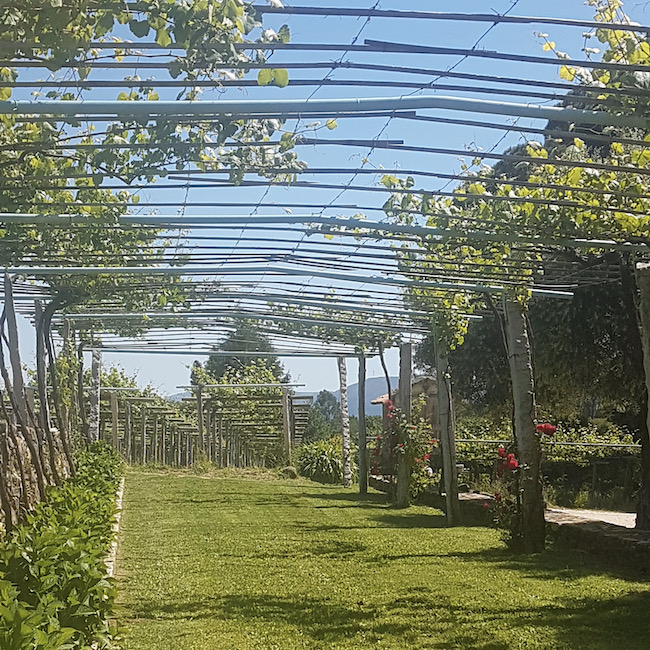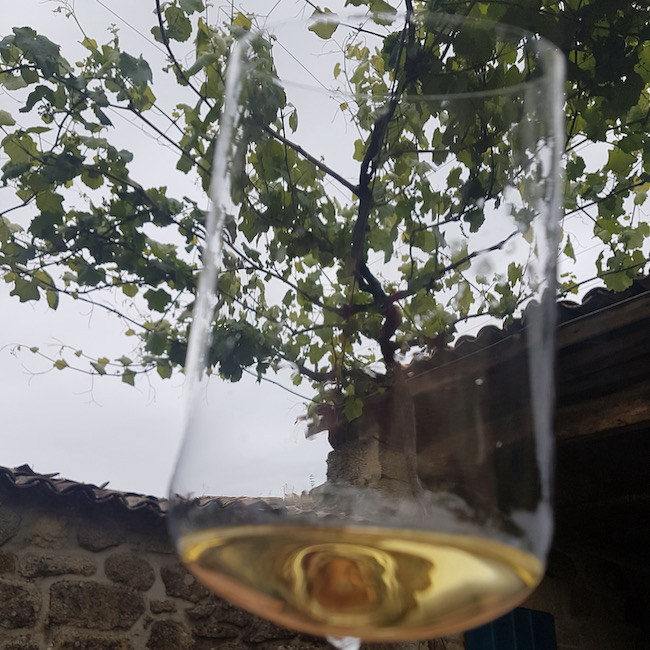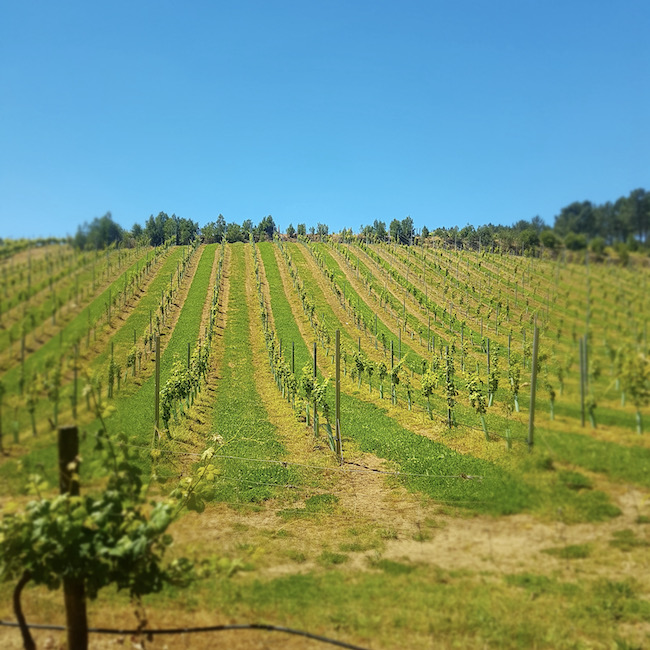.png.transform/rendition-xs/image_image%20(1).png)
A Look At Glorious Galicia’s Albariño
Wine consultant Lynda Coogan explores one of the most popular wine regions of Green Spain
Galicia is located up on the northwest coast of the Iberian peninsula in Spain. The area is commonly known as ‘Green Spain’, famous for its spectacular luscious green landscapes and rocky coastline. It is a unique area with its own micro-climate and even its own dialect. A couple of years ago I had the pleasure of exploring the region. Our first stop was in the best known and most commercial successful region Rías Baixas followed by Ribeiro and finally Ribeira Sacra.
It is believed that the Romans brought viticulture to the Galicia region and the white grape Albariño is the shining star of Rías Baixas. In the 1980's the modern winemaking history of Rías Baixas began, in 1988 after Spain joined the European Union (EU), Rías Baixas DO was created.

Rías Baixas is Galician for “Lower Estuaries,” and refers to four estuaries – Ría de Muros y Noia, the Ría de Arousa, the Ría de Pontevedra, and the Ría de Vigo, where the land stretches out into the Atlantic like fingers along the southwestern coast of Galicia. These rías influence the style of wine produced in each of the subzones of Rías Baixas.
Albariño thriving
Rías Baixas has moderate temperatures all year round, with sea mists and foggy conditions prevailing. The proximity to the water means that the temperature fluctuations are minimized compared to more inland or landlocked areas. Occasionally heavy rainfall during the winter months can be almost three times the national average. Thankfully there are over 2,200 hours of sunshine annually, which ensures Albariño ripens on schedule.
In order for vines to fully ripen, vines are planted at a height. This allows the breeze to flow through the vines for maximum circulation to prevent mildew. Traditionally vines are widely spaced trained on stone pergolas made of granite. Most vines are trained on a wire trellis up to seven feet high called a parra. Some vineyards are replacing the traditional parra canopy and using a double cordon training system called espaldera. When the ripe grapes are ready to be harvested many pickers stand on grape bins to reach them.
Albariño thrives in granite and schist soils. Due to the region's proximity to bodies of water, some of the soils have alluvial deposits – a combination of clay, silt, sand, and gravel. The Rías Baixas designation allows 8 different wines to be produced including Espumoso (sparkling wine). There are in fact up to 14 indigenous grapes that are permitted in the region. While 99% of the wines here are white and the vast majority Albariño based, the other white grapes that can be found in blends are Treixadura, Godello, Loureira blanca, Caiño blanca, and Torrontés.

The native grapes of Galicia are characterised by the land; some of the main red grapes include Caiño tinto, Sousón, Mencía, Espadeiro, Loureira tinto, Brancellao, Castañal and Dozal
Rías Baixas is divided into five subregions; Val do Salnés, Soutomaior, O Rosal, Condado do Tea and Ribeira do Ulla. Each subzone demonstrates the subtle diversity of the region with their own micro-climates and unique subsoils. The wine styles differ due to their topography, proximity to rivers and sea, their microclimates, terroir, grape varieties, and different winemaking techniques.
Jewel in the Rias Baixas Crown
While most Albariño’s tend to be enjoyed youthful, with aromas of fresh citrus fruits, hints of apple, stone fruits and occasionally flower blossom with refreshing high acidity. Wines close to the coastline often display delicate saline or mineral characteristics. These styles pair beautifully with the abundant fresh local seafood and shellfish and of course local bonito empanadas (large tuna pies).
There are a lot of exciting advances happening in Rías Baixas right now. Bodegas such as Pazo Barrantes (part of the Marqués de Murrieta family) no longer produce the fruit forward youthful style Albariño. These have been replaced with more complex premium Albariño’s fermented on their lees (dead yeast cells) and aged in oak barrels. On a visit to Bodegas Granbazán, we tasted a selection of wines with winemaker Diego Rios. Many of the wines in their portfolio have been aged on their lees and in oak barrel to add texture and complexity to their wines. There is also a trend for using amphora, (clay storage vessels) for vinifying or ageing wine. Clay is a neutral porous material and is a natural method to micro-oxygenate wine without imparting any flavors.
These new modern high-end styles are being sought after by top sommeliers and wine critics showing they are capable of this new style for longevity.
Hidden Treasures
The most exciting lesser known grapes in Galicia are Treixadura, Loureira blanca, and Caiño blanca. Often used in blends with Albariño in Rías Baixas. Where these grapes came into their own was in Ribeiro more inland with a warmer climate. Here we find aromatic wines with a riper fruit profile, aromas of honey, flower blossom and herbs. If you are looking for an interesting region to explore try the wines of Ribeiro and Monterrei.
Last but far from least was the breath-taking vineyards planted on steep slopes in the valley of the rivers Sil and Miño; Ribeira Sacra meaning (Sacred River). Here the red Mencía grape is king, impossible to machine harvest, producing this grape is a labour of love and only small quantities can be produced. Mencía is better known in Bierzo where winemaker Raúl Pérez expression of the grape is hailed as the finest in Spain. Wines such as Peza do Rei, and Guimaro are worth exploring.

Galicia & Gastronomy
When you visit Galicia explore Mercado de Abastos de Santiago, where you will find the freshest local produce including specialty cheese tetilla (Spanish for small breast) which is famous not only its taste but its shape too. At the Mercado you can enjoy local tortilla, bonito empanadas, Padrón peppers, fresh fish, razor clams, and charcuterie. A must try is pulpo a la gallega (Galician style octopus).
The future for Albariño shows great potential to produce high-quality wines under the skilled guidance of a new wave of winemakers. They are proving that their wines have a place at the table with many of the other premium white wines of the world.
I hope that more people outside of Spain will continue to enjoy the wines from Galicia. With a glass of Albariño in hand eating the delicacies of their tinned conservas embracing the Galician culture and cuisine. Albariño truly is the grape of the land and of the sea.


